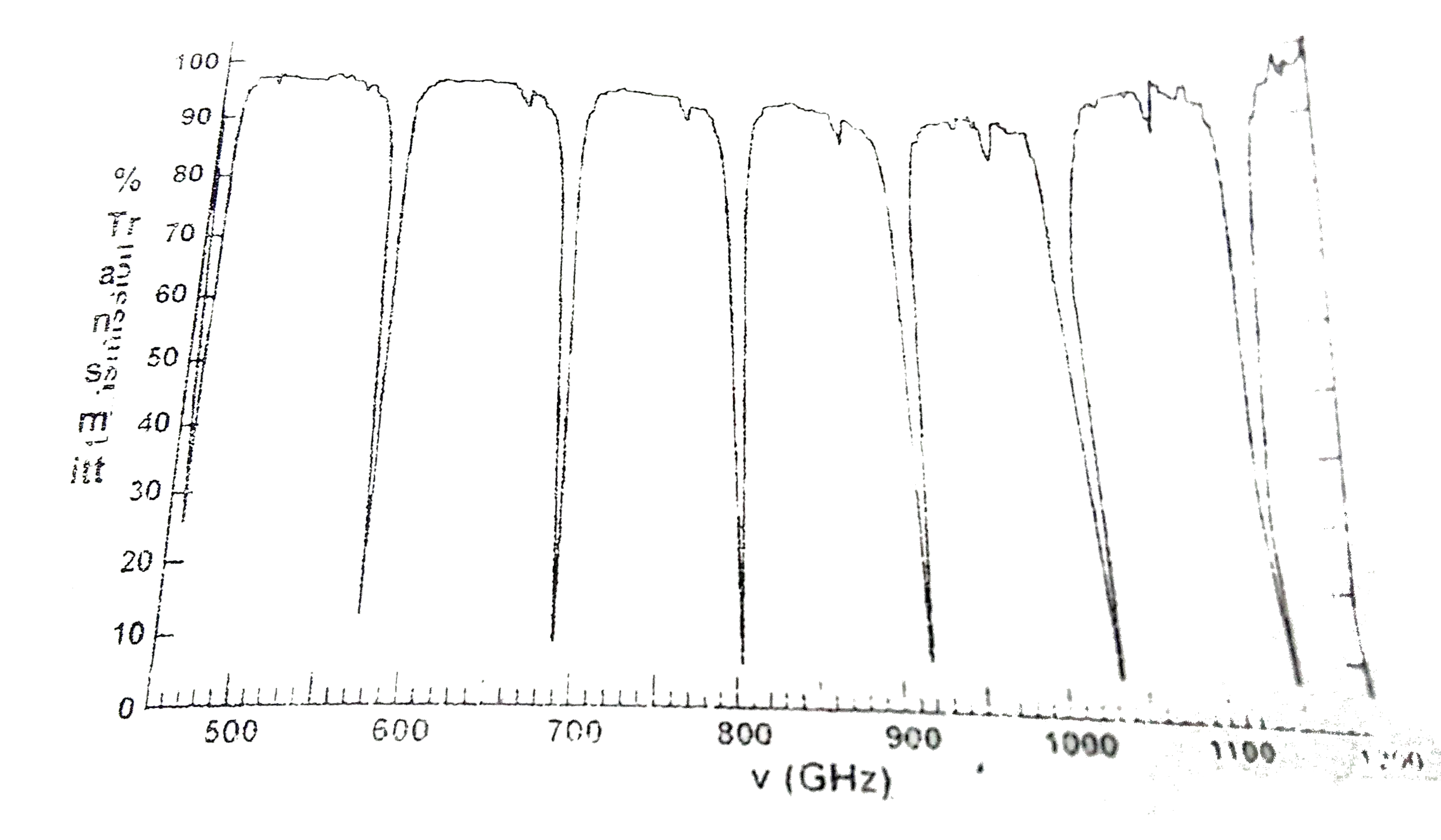For an HCI molecule find the rotational quantum numbers of two neighbouring levels whose energies differ by 7.86meV. The nuclei of the molecule are separated by distacne of 127.5pm.
The axis of rotation passes through the centre of mass of the HCl molecule.The distance of the two atoms from the centre of mass are
dH=mclMHcld,=mHmHcld
Thus I= moment of interita about the axis
42mHd2H+mcld2cl=mHMclmH+mcld2
The energy difference between two neighbouring levels whose quantum numbers are J&J−1 is
ħ22I.2J=Jħ2I=7.86meV
Hence J=3 and the levels have quantum numbers 2&3.
Topper's Solved these Questions
- BOOK - IE IRODOV, LA SENA & SS KROTOVCHAPTER - ATOMIC AND NUCLEAR PHYSICSEXERCISE - Radioactivity35videos
ATOMIC AND NUCLEAR PHYSICS
- BOOK - IE IRODOV, LA SENA & SS KROTOVCHAPTER - ATOMIC AND NUCLEAR PHYSICSEXERCISE - Nuclear Reaction42videos
ATOMIC AND NUCLEAR PHYSICS
- BOOK - IE IRODOV, LA SENA & SS KROTOVCHAPTER - ATOMIC AND NUCLEAR PHYSICSEXERCISE - Properties Of Atom69videos
ATOMIC AND NUCLEAR PHYSICS
- BOOK - IE IRODOV, LA SENA & SS KROTOVCHAPTER - DIRECT CURRENTEXERCISE - All Questions15videos
DIRECT CURRENT
Similar Questions
Find the number of ratational levels per unit energy interval, dN/dE, for a diatomic molecule as a function of rotational energy E. Calculate of an magnitude for an iodine molecule in the state with rotational quantum number J=10. The distance between the nuclei of that molecule is equal to 267pm.
View SolutionFind the angular momentum of an oxygen molecule whose rational energy is E=2.16meV and the distance between the nuclei is d=121pm.
View Solution
Knowledge Check
- Question 1 - Select One
With the increase in peinciple quantum number, the energy difference between the two successive energy levels
AincreasesBdecreasesCremians constantDsometimes increases and sometimes decreases
With the increase in peinciple quantum number, the energy difference between the two successive energy levels
View SolutionShow that the frequency intervals between the neighbouring spectral lines of a true ratational spectrim of a diatomic molecules are equal. Find the moment of intertial and the distance between the nuclei of a CH molecule if the intervals between the neighbouring lines of the true rotational spectrum of these molecules are equal to Δω=5.47.1012s−1
View SolutionFor an HF molecule find the number of rotational levels located between the Zeroth and first excited vibrational levels assuming rorational states to be independent of vibrational ones. The natural vibration frequency of this molecule is equal to 7.79.1014rad/s and the distance between the nuclie is 91.7pm.
View SolutionRotational energy levels of diatomic molecules are well described by the formula EJ=BJ(J+1), where J is the rotational quantum number of the molecule and B its rotational constant. B is related to the reduced
mass μ and the bond length R of the molecule through the equation B=h28π2μR2.
In general, spectroscopic transitions appear at photon energies which are equal to the energy difference between appropriate states of a molecule (hv=ΔE). The observed rotational transitions occur between adjacent rotational levels, hence ΔE=EJ+1−EJ=2B(J+1). Consequently, successive rotational transitions that appear on the spectrum (such as the one shown here) follow the equation h(Δυ)=2B.

By inspecting the spectrum provided, determine the following quantities for ^(2)C^(p)Cwithap∝riateunits<br>(a)Deltaupsilon(b)B(c)RView SolutionRotational energy levels of diatomic molecules are well described by the formula EJ=BJ(J+1), where J is the rotational quantum number of the molecule and B its rotational constant. B is related to the reduced
mass μ and the bond length R of the molecule through the equation B=h28π2μR2.
In general, spectroscopic transitions appear at photon energies which are equal to the energy difference between appropriate states of a molecule (hv=ΔE). The observed rotational transitions occur between adjacent rotational levels, hence ΔE=EJ+1−EJ=2B(J+1). Consequently, successive rotational transitions that appear on the spectrum (such as the one shown here) follow the equation h(Δυ)=2B.

By inspecting the spectrum provided, determine the following quantities for ^(2)CpC with appropriate units
(a) Δυ (b) B (c) RView SolutionIn the HCI molecule, the separation between the nuclei of the two atoms is about 1.27Å(1Å=10−10m). Find the approximate location of the c.m of the molecule, given that a chlorine atom is about 35.5 times as massive as a hydrogen atom and nearly all the mass of an atom is concentrated in its nucleus ?
View SolutionIn the HCI molecule, the separation between the nuclei of the two atoms is about 1.27Å(1Å=10−10m). Find the approximate location of the c.m of the molecule, given that a chorine atom ia about 35.5 times as massive as a hydrogen atom and nearly all the mass of an atom is cocentrated in its uncleus ?
View Solution

